Why Rodents Move Indoors in Autumn
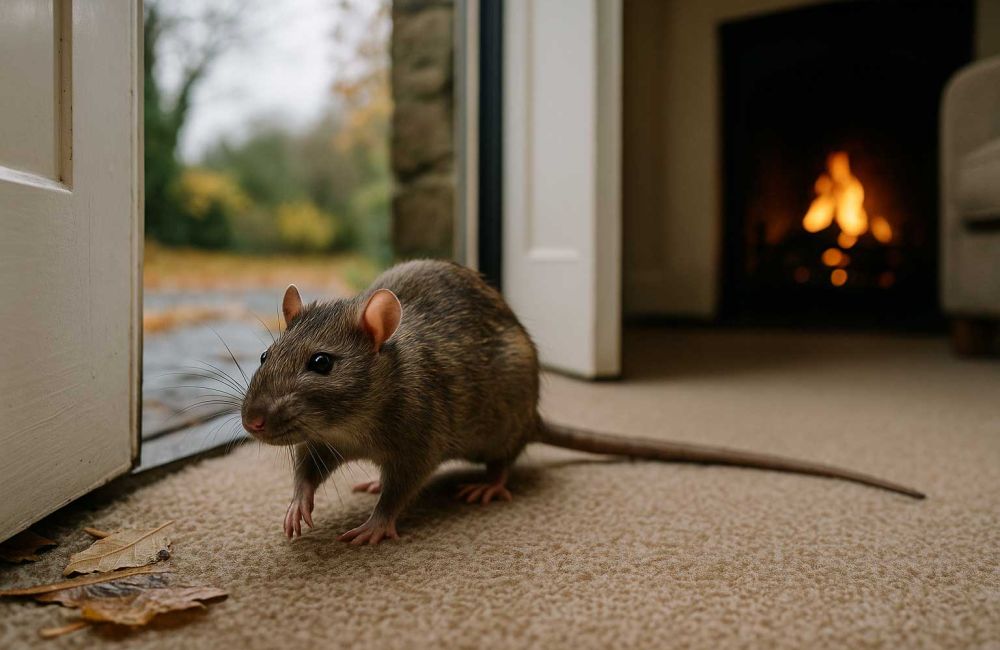
Introduction
As autumn arrives across the UK, many homeowners begin to hear scratching noises in walls or see signs of unwanted guests: droppings in cupboards, gnawed cables, or odd scuttling at night. It’s no coincidence — autumn is a peak period for rodents like rats and mice to migrate indoors in search of food, warmth, and shelter.
In this long-form article, we’ll explain:
- The seasonal triggers that drive rodents indoors
- The species you’re most likely to see
- How they enter properties
- Signs of infestation
- Prevention and proofing strategies
- Safe removal and control methods
- When you should call in professionals
By the end, you’ll understand how to protect your home from autumn rodent intrusion and build a stronger reputation for EradiControl as a trusted authority.
Why Rodents Move Indoors in Autumn
Food Scarcity After Harvest Season
During spring and summer, rodents thrive outdoors: fields, hedgerows, gardens, and woods provide abundant seeds, grains, fruits, and insect prey. But as harvest passes and crops are collected or removed, their food sources diminish. Once natural food dwindles and vegetation cover declines, rodents begin searching for alternative sources — often inside buildings.
Cooler Temperatures and Shelter-seeking
Rodents prefer stable ambient temperatures. As nightly lows drop in autumn, they seek insulated environments — lofts, wall cavities, cellars, and sheds. Many urban pest control providers report that rodent calls spike sharply from September onward due to this push.
Decline in Outdoor Shelter and Cover
Vegetation dies back, leaf litter is cleared, and hedges lose foliage. This reduces hiding spots for rodents. In open fields or gardens, they become more vulnerable to predators. So they move toward the safety of buildings, where structural features provide concealment.
Water Becomes Scarcer
Rats and mice need daily water intake. In autumn, rainfall patterns shift, and puddles or shallow ground water may dry up. Taps, drains, gutters, and indoor moisture sources become attractive alternatives.
Population Pressure and Dispersal
By late summer, rodent populations may have increased, forcing younger or subordinate animals to disperse. They venture further in search of territory, which drives a portion of them indoors.
Rodent Species You’ll Likely Encounter in UK Homes
Brown Rat (Rattus norvegicus)
The most common large pest rodent in the UK. Brown rats are robust, burrow extensively, gnaw through many materials, and can travel long distances. They’re responsible for much of the structural and wiring damage we see.
House Mouse (Mus domesticus)
Smaller and more nimble, house mice can squeeze through tiny gaps (around 6 mm or less). They breed fast and often infiltrate pantries, wall cavities, and even appliances.
Field or Wood Mice (Apodemus species)
In rural or semi-rural areas, field mice may invade sheds and lofts. They are more outdoors‑oriented but will enter when conditions worsen.
Lesser Pests
Occasionally, roof rats or ship rats may appear in coastal or port areas, but these are far less common in typical UK residential settings.
How Rodents Enter Buildings
Rodents are skilled infiltrators. Understanding where they gain access is key to proofing.
Small Cracks, Gaps and Voids
Rats can enter through gaps as small as 12–15 mm. Mice can squeeze through just 6 mm holes. Common weak points include:
- Cracks around foundations or footings
- Gaps behind drainpipes and utility lines
- Vents, air bricks, and flues
- Gaps under doors and garage doors
- Broken fascia, soffits, or roofline penetrations
Underside Access: Decking, Sheds and Ground Floors
Rodents will exploit wooden attachments and shed floors. If the underside is open or poorly sealed, they can crawl beneath and access wall cavities.
Sewer and Drain Access
Rats are known to travel through drain systems and pipework. Faulty plumbing, damaged drain covers, or missing gullies can allow entry. Maintaining drain integrity and using rodent-proof gully traps is essential.
Roof and Wall Penetrations
Cables, satellite dish mounts, external boiler pipes, and wiring looms often leave unsealed entry routes. Rodents will exploit any penetration that isn’t properly sealed.
Vegetation and Climbing Routes
Ivy, tree branches, or shrubs touching walls allow rodents to climb into lofts or rooflines. Trim foliage away to deny them access.
Signs You Might Have a Rodent Infestation
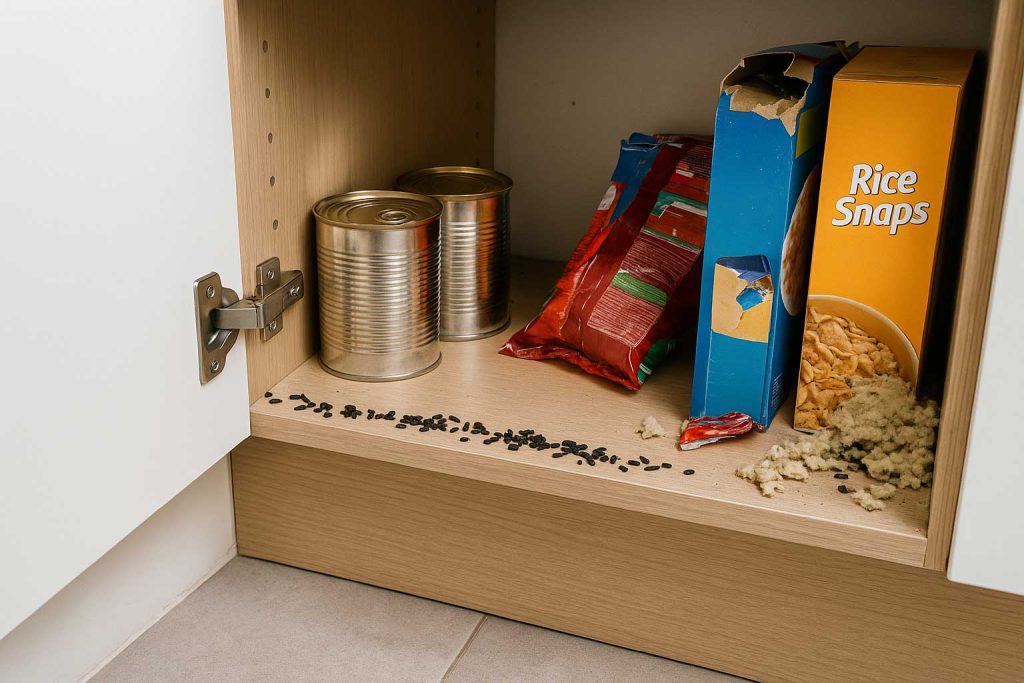
Droppings and Urine Smell
Rat droppings are large (about 12 mm) and pointed, while mice droppings are smaller (5–7 mm) and pellet-shaped. A musty, ammonia-like urine smell may be detectable in enclosed spaces.
Noises in Walls or Ceilings
Scratching, gnawing, or running sounds at night suggest movement within cavities. These often begin after sunset as rodents forage.
Gnaw Marks and Chewed Items
You may find chew marks on wood, cables, plasterboard, packaging, or pipes. Rodents constantly gnaw to wear down their teeth.
Grease Marks and Rub Lines
As rodents travel routes repeatedly, their fur picks up grime and leaves dark lines along skirting boards or wall crevices.
Nesting Material
Shredded paper, insulation, or dry vegetation in hidden corners points to nesting. Mice often nest behind appliances or in loft insulation.
Burrows and Runs
Outside your home, look for rodent runs or burrow entrances near structural elements, foundations, or garden walls.
Sightings of Actual Rats or Mice
Seeing one rodent might be minor, but multiple movements — especially during daylight — usually indicate a significant infestation.
The Risks of Rodents Indoors
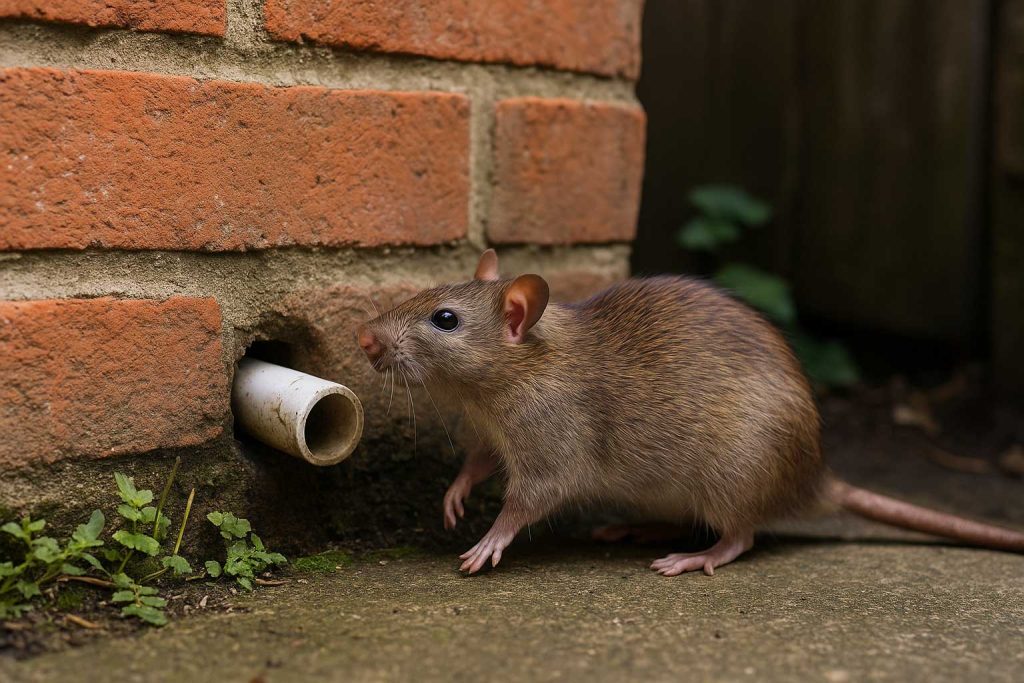
Structural and Property Damage
Rodents chew through wood, drywall, insulation, cables, and piping. This may lead to electrical faults or water damage.
Fire Risk
Gnawed electrical cables may short or spark, especially within wall voids or close to flammable materials.
Contamination and Disease
Rats and mice carry pathogens like Leptospirosis, Salmonella, and Hantavirus. They contaminate food surfaces and storage areas via droppings and urine.
Food Loss and Spoilage
Stored foods — cereals, grains, pet food — may be eaten or fouled, leading to costly waste.
Allergies and Respiratory Issues
Rodent dander, droppings, or urine may trigger allergic or asthma reactions in sensitive individuals.
Business and Letting Risk
For landlords or food premises, rodent infestations lead to regulatory breaches or reputational damage. Our End of Tenancy Fumigation service can help in these situations.
Rodent-Proofing and Prevention
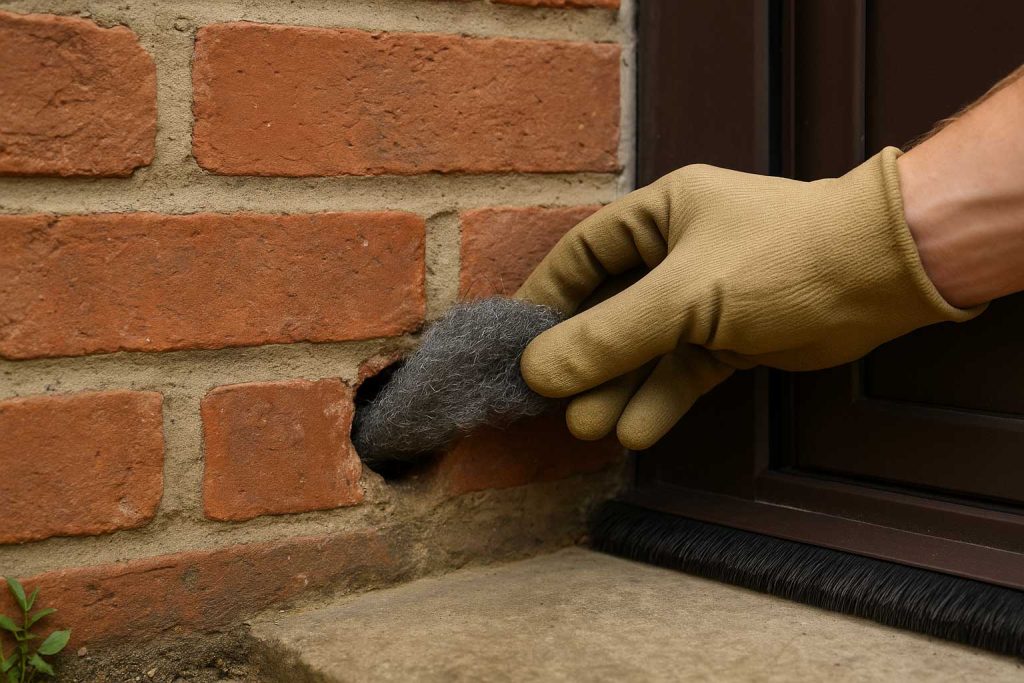
Seal Entry Points
- Use steel wool, metal plates, or cement to block entry holes
- Fit brush strips or door sweeps on exterior doors
- Seal cracks in foundations and walls
- Cover air bricks with rodent-proof mesh
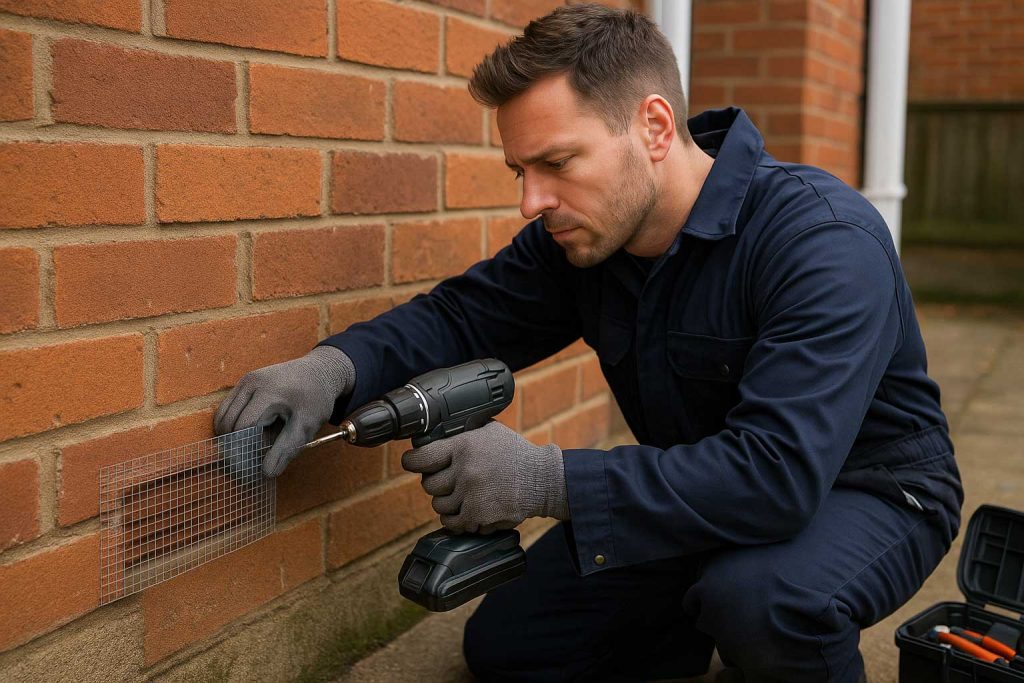
Eliminate Food Sources
- Store food in airtight containers
- Clean crumbs, bins, and pet feeding areas daily
- Avoid leaving leftovers or rubbish bags outdoors
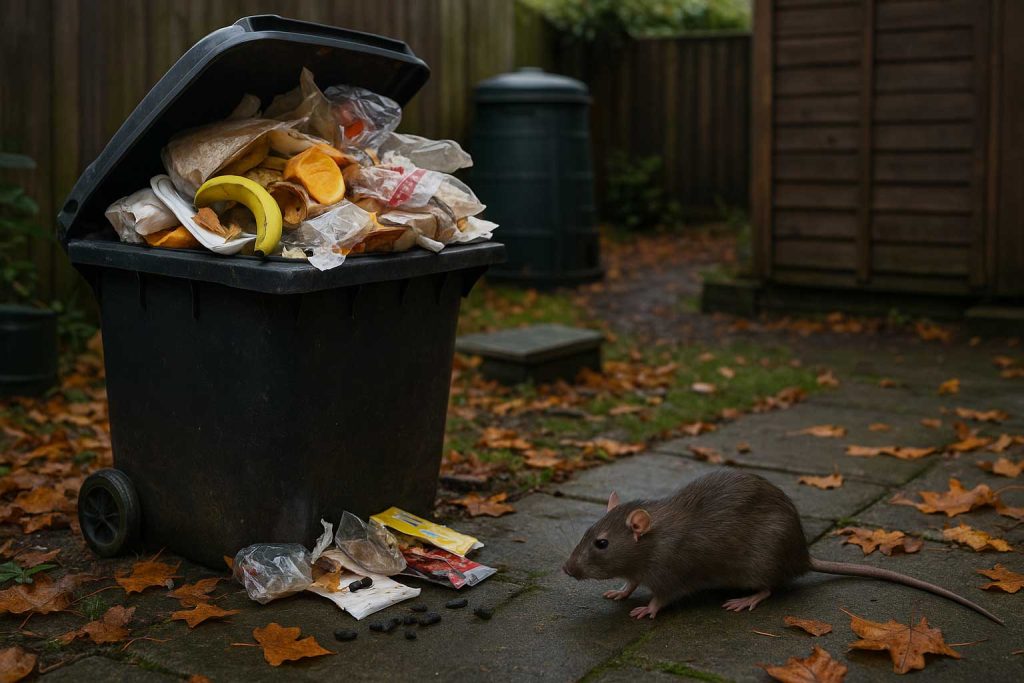
Remove Nesting Materials
- Declutter storage areas
- Store firewood off the ground
- Avoid cardboard storage in lofts or sheds
Manage Outdoor Areas
- Trim vegetation touching your house
- Secure compost bins with sealed lids
- Fix leaking taps or gutters
Inspect Regularly
- Check known weak spots each season
- Look for signs in outbuildings and lofts
- Use bait stations for early detection
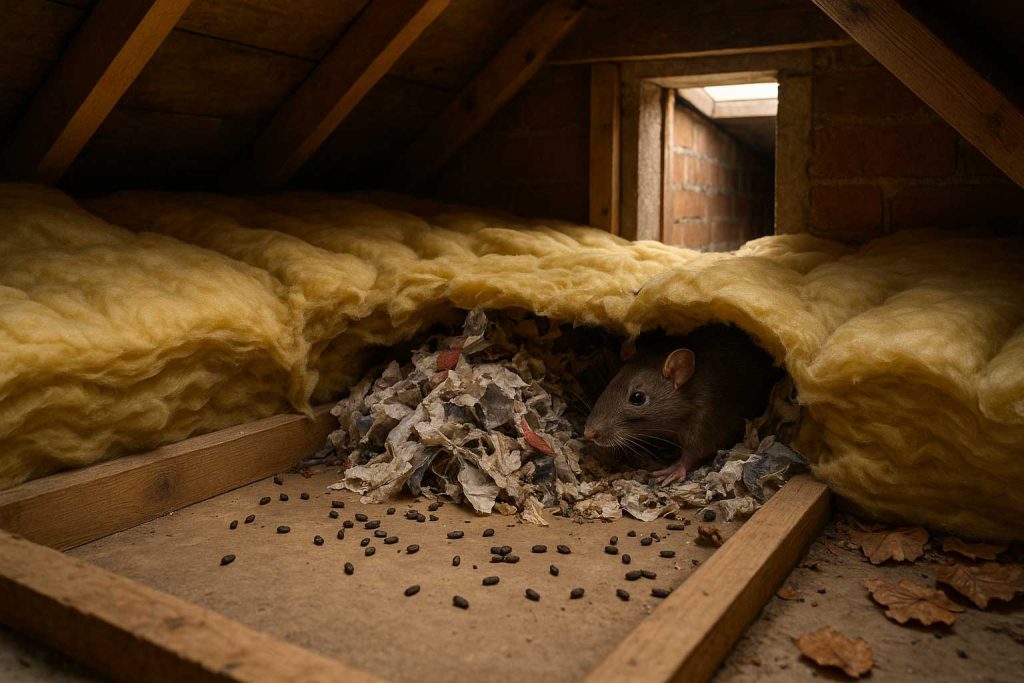
You can find more tips in our Rodent Control guide or speak to our team about prevention services.
Control Methods When Prevention Fails
Traps
Snap traps and humane traps can work well in early-stage infestations. Always place along walls or suspected rodent runways.
Rodenticides
Use only in tamper-proof bait stations and according to UK safety guidance. This is best handled by professionals to avoid risks to pets and children.
Professional Integrated Pest Management (IPM)
At EradiControl, our IPM includes:
- Inspection
- Sealing entry points
- Strategic baiting
- Non-toxic deterrents
- Follow-up visits and proofing
Thermal and Fumigation (Advanced Cases)
For large-scale commercial or deep-wall infestations, more advanced solutions may be required, including thermal monitoring and fogging. Contact us via our Emergency Pest Control service for advice.
Areas We Cover
EradiControl provides rodent control across Dorset and the South, including:
FAQs
After harvest, their outdoor food disappears. Colder temperatures also push them toward warmer, sheltered indoor spaces.
Yes. Rats spread disease, cause property damage, and pose a fire risk by chewing cables.
Size, droppings, and noise vary. Mice leave smaller droppings and are quieter, while rats are larger and more destructive.
Yes, and it helps. But if rodents are already inside, you’ll also need traps or professional help.
Mice can produce a litter every 21 days. A small problem can become a major infestation in weeks.
Yes. Visit our Eco-Friendly Pest Control page to learn more.
Conclusion
Rodents move indoors every autumn. Whether it’s to escape the cold, find food, or build a nest, your home is a prime target. With proper prevention and support from experts like EradiControl, you can stay one step ahead.
If you’ve seen signs of rats or mice, don’t wait.
Request a callback or quote via our Contact Page today.
Where to Next?
- Home
-
Domestic Pest Control
-
Commercial Pest Control
-
Eco-Friendly Pest Control
-
Emergency Pest Control
-
Rodent Control
-
Wasp Control
-
Bed Bug Treatment
-
Flea Control
-
Ant Control
-
Cockroach Control
-
Moth Control
-
Fly Control
-
Stored Product Insect Control
-
Spider Control
-
Carpet Beetle Treatment
-
Woodworm Treatment
-
Bird Control
-
Fox Control
-
Squirrel Control
-
Insect Control
-
Booklice Control
- Blog









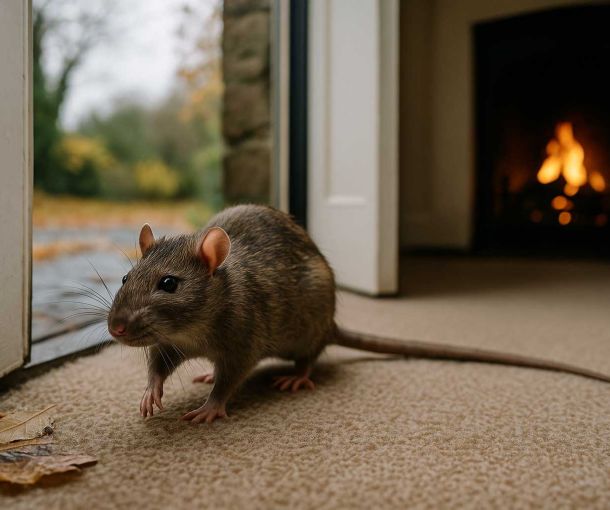





Leave a Reply